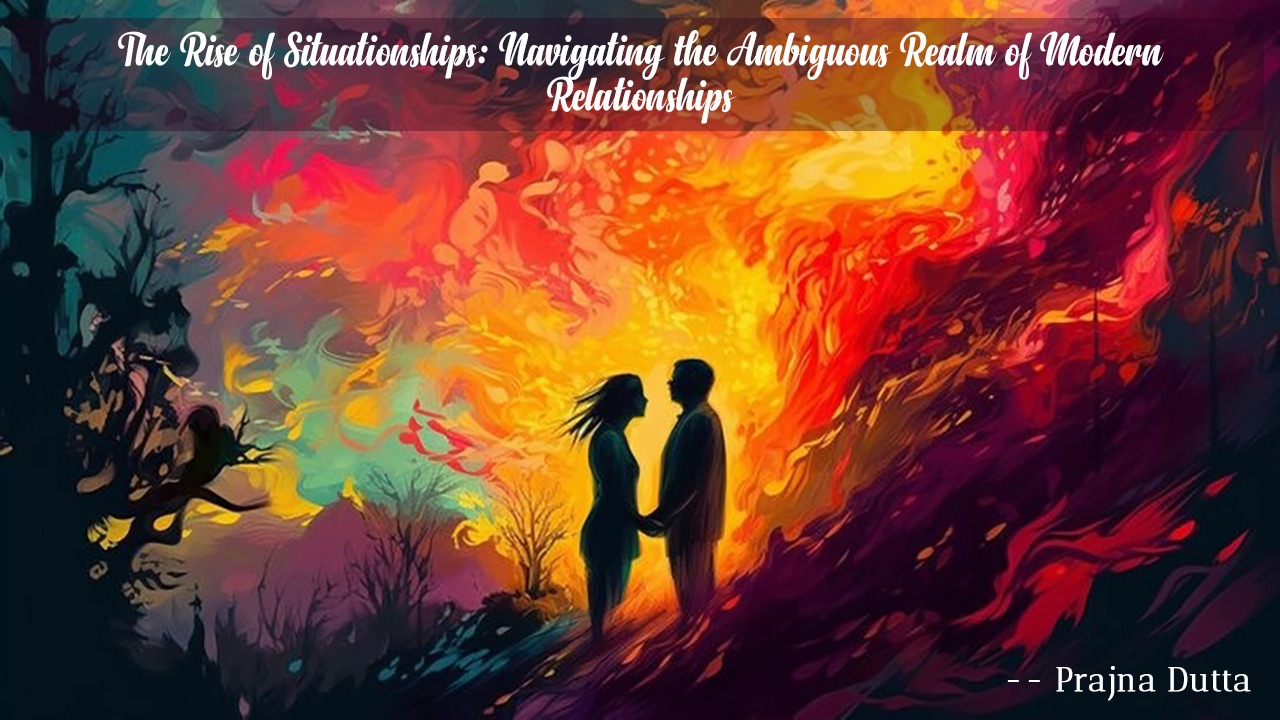Introduction:
In recent years, a new term has emerged in the realm of dating and relationships: "situationship." Combining the words "situation" and "relationship," this concept refers to a gray area between casual dating and a committed partnership. Situationships have gained prominence in modern society, reflecting the evolving nature of human connections and the challenges faced in establishing clear boundaries and expectations. In this article, we delve into the complexities of situationships, exploring their characteristics, benefits, drawbacks, and strategies for navigating them.
Understanding Situationships:
Situationships can be best described as relationships without defined labels or commitments. They exist within a framework of ambiguity, where individuals share emotional and physical intimacy but avoid explicitly defining their connection. People in situationships often enjoy the perks of a romantic relationship, such as companionship, intimacy, and shared experiences, without the formalities and obligations of a traditional partnership.
Characteristics of Situationships:
1. Lack of defined commitment: Unlike a traditional relationship, situationships lack clear commitments and expectations. Individuals involved may hesitate to label the connection due to fear of commitment or a desire to keep their options open.
2. Emotional ambiguity: Situationships often lack the emotional depth and vulnerability associated with committed relationships. The focus tends to be on maintaining a casual and lighthearted dynamic, avoiding discussions about long-term plans or personal growth.
3. Absence of exclusivity: Situationships typically do not come with exclusivity clauses. Both parties may be free to explore connections with others, adding an element of uncertainty to the relationship.
Benefits of Situationships:
1. Flexibility and freedom: Situationships offer individuals the freedom to explore their own personal growth and goals without feeling tied down by commitments. They allow for a more fluid and adaptable approach to relationships.
2. Emotional support: While situationships may lack the depth of emotional connection found in committed relationships, they still offer companionship, intimacy, and support. They can provide a safe space to share experiences, seek advice, and enjoy the company of another person.
3. Learning experience: Situationships can serve as valuable learning experiences, allowing individuals to understand their own needs, desires, and boundaries. They provide an opportunity for self-reflection and personal growth, helping individuals develop a clearer understanding of what they want in future relationships.
Drawbacks of Situationships:
1. Uncertainty and insecurity: The lack of clarity in situationships can lead to uncertainty and insecurity. Without defined boundaries, individuals may question the intentions and expectations of their partner, causing emotional distress and anxiety.
2. Potential for emotional imbalance: Situationships often involve unequal emotional investments. One person may develop stronger feelings while the other remains detached, leading to an imbalance of power and potential heartbreak.
3. Stifled growth: While situationships offer flexibility, they can also hinder personal growth and prevent individuals from pursuing deeper connections. The lack of commitment and long-term planning may leave individuals feeling stagnant and unsure of their future.
Navigating Situationships:
1. Communication is key: Open and honest communication is crucial in situationships. Discuss expectations, boundaries, and desires with your partner to ensure both parties are on the same page. Regular check-ins can help address concerns and maintain a healthy dynamic.
2. Self-reflection and introspection: Take the time to reflect on your own needs, desires, and boundaries. Understand what you truly want from the situationship and evaluate whether it aligns with your long-term goals and values. This self-awareness will help you make informed decisions about whether to continue or transition the relationship.
3. Establish boundaries: Clearly define and communicate your boundaries within the situationship. Discuss topics such as exclusivity, communication expectations, and emotional availability. Setting boundaries will help create a sense of structure and prevent misunderstandings or hurt feelings.
4. Regularly reassess the situation: Situationships can evolve over time, and it's essential to regularly reassess the relationship. Check in with yourself and your partner to ensure that the situationship is still meeting your needs and desires. Be open to adjusting the nature of the relationship or transitioning into something more committed if that's what you desire.
5. Prioritize self-care: It's important to prioritize your own well-being in a situationship. Take care of your emotional and mental health by engaging in activities that bring you joy and fulfillment outside of the relationship. Investing in self-care will help you maintain a sense of independence and prevent overreliance on the situationship for happiness.
6. Be prepared for potential outcomes: Understand that situationships may not always lead to a committed relationship. Be prepared for the possibility of the relationship remaining in a state of ambiguity or coming to an end. It's essential to manage your expectations and be honest with yourself about what you truly want from the connection.
Conclusion:
Situationships have become a prevalent aspect of modern dating, reflecting the changing dynamics and complexities of relationships in today's society. While they offer flexibility and companionship, they also carry uncertainties and potential pitfalls. Navigating situationships requires open communication, self-reflection, and a willingness to set and respect boundaries. Ultimately, individuals must assess whether a situationship aligns with their needs and desires, and be prepared to make decisions that prioritize their own emotional well-being and long-term happiness.

Comments